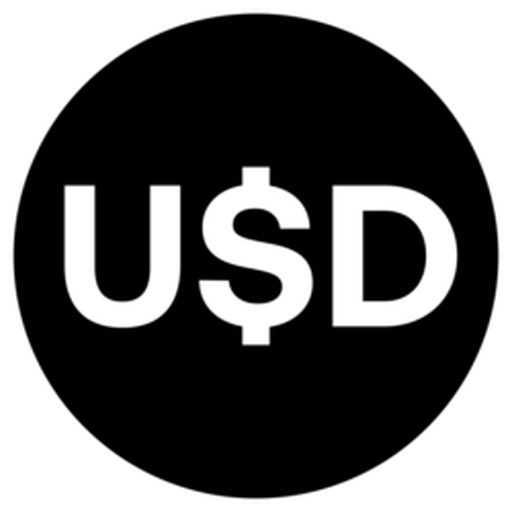Mantle Staked Ether vs Frax USD – Price, Market Cap & Performance Compared
Which coin performs better – Mantle Staked Ether or Frax USD?
We compare the current price (4 473.6 $ vs 0.99952 $), market cap (1 072 820 606 vs 82 301 264) and all-time high (5 312.55 vs 1.004).
Find out which one stands out right now!
Mantle Staked Ether is currently trading at 4 473.6 $, while Frax USD stands at 0.99952 $. These cryptocurrencies differ not only in price but also in market presence.
The market cap of Mantle Staked Ether is around 1 072 820 606, and Frax USD has about 82 301 264. Their respective all-time highs are 5 312.55 for Mantle Staked Ether and 1.004 for Frax USD.
Daily trading volume and the 24h price change (-0.08364 % vs -0.00110 %) also offer key insights.
Compare all metrics now and see which coin fits your investment strategy best!
Mantle Staked Ether
Mantle Staked Ether is an innovative cryptocurrency that combines the principles of Ethereum staking with enhanced liquidity options. By participating in the Mantle network, users can stake their Ether and receive staked tokens, which can then be utilized in DeFi applications without un-staking. This allows investors to maintain flexibility while still earning potential rewards from the Ethereum blockchain's staking mechanism.
more informationFrax USD
Frax USD is an innovative stablecoin that aims to provide a balanced approach between fiat collateral and algorithmic stabilization. By integrating a fractional reserve model, it seeks to maintain its peg to the US dollar while promoting decentralization and capital efficiency. As the market for stablecoins evolves, Frax USD stands out as a dynamic player focused on offering both stability and scalability in the DeFi ecosystem.
more information

|

|
|
|
|
General Information |
|
|---|---|
|
Title
Mantle Staked Ether
|
Title
Frax USD
|
|
Symbol
meth
|
Symbol
frxusd
|
|
Whitepaper
|
Whitepaper
-
|
|
Website
|
Website
|
|
Community
-
|
Community
-
|
|
Last Updated
2025-09-24 23:29
|
Last Updated
2025-05-06 21:58
|
Price Data |
|
|---|---|
|
Current Price $
4 473.6 $
|
Current Price $
0.99952 $
|
|
High 24h
4 513.66 $
|
High 24h
0.9999 $
|
|
Low 24h
4 405.27 $
|
Low 24h
0.99919 $
|
|
Price Change 24h
-3.74477 $
|
Price Change 24h
-0.00001 $
|
|
Price Change % 24h
-0.08364 %
|
Price Change % 24h
-0.00110 %
|
Market Data |
|
|---|---|
|
Market Cap
1 072 820 606
|
Market Cap
82 301 264
|
|
Total Volume
1 633 254
|
Total Volume
3 405 355
|
|
Market Cap Change 24h
-3 239 119
|
Market Cap Change 24h
766.07
|
|
Market Cap Change % 24h
-0.30102 %
|
Market Cap Change % 24h
0.00093 %
|
|
Return on Investment (ROI)
-
|
Return on Investment (ROI)
-
|
Supply and Availability |
|
|---|---|
|
Circulating Supply
239 960
|
Circulating Supply
82 340 547
|
|
Total Supply
239 960
|
Total Supply
82 340 547
|
|
Max Supply
-
|
Max Supply
-
|
Historical Data |
|
|---|---|
|
All Time High (ATH)
5 312.55
|
All Time High (ATH)
1.004
|
|
ATH Change %
-15.78737 %
|
ATH Change %
-0.41714 %
|
|
ATH Date
2025-08-24 19:26
|
ATH Date
2025-02-18 12:40
|
|
All Time Low (ATL)
1 485.62
|
All Time Low (ATL)
0.97622
|
|
ATL Change %
201.14304 %
|
ATL Change %
2.39112 %
|
|
ATL Date
2025-04-09 01:32
|
ATL Date
2025-02-17 17:32
|
Mantle Staked Ether
Introduction to Mantle Staked Ether (METH)
Mantle Staked Ether (METH) has emerged as a significant player in the cryptocurrency ecosystem, particularly for those keenly interested in Ethereum-staked assets. As an innovative blend of staking rewards and liquidity, METH has attracted both seasoned investors and crypto enthusiasts looking for diversified options. Understanding its past trajectory, current standing, and potential future can provide keen insights into its viability as an investment.
The Rise of Mantle Staked Ether
Mantle Staked Ether was introduced as part of a growing trend towards providing staked assets on leading blockchain platforms. The goal is to offer investors the dual benefits of participation in the Ethereum 2.0 staking system and the liquidity of a tradable ERC-20 token. By enabling Ether holders to earn rewards without locking up their assets indefinitely, METH addresses a critical challenge faced by stakers: illiquidity.
Historical Performance
Since its introduction, METH has experienced significant highs and lows, reflective of its adoption and market conditions. The initial traction led to its All-Time High (ATH) at $4729.53 in March 2024, indicating strong initial enthusiasm and adoption. However, like many crypto assets, it has also faced periods of correction, currently standing 43.76% below its ATH. This decline brings METH to a market price of $2660.92, with previous recoveries from lows such as $2142.02 in December 2023, showing resilience.
Pros and Cons of Investing in METH
Investors considering METH have a balanced scale of pros and cons to review. On the positive side, the staking aspect provides ongoing rewards, making it attractive for those looking to compound their Ethereum holdings. Additionally, its structure facilitates liquidity, which is pivotal for investors who prefer to keep their options open without sacrificing potential staking gains.
Conversely, the cons include typical risks associated with crypto assets such as price volatility, as evidenced by its recent price change of 2.27% within a 24-hour period. Moreover, regulatory uncertainties and technological risks inherent in blockchain operations could impact its overall adoption and price stability.
Current Market Position
METH currently holds a market cap of approximately $1.22 billion with a circulating supply closely matching its total supply, indicating a relatively saturated market presence. A recent 24-hour trading volume of around $13 million reflects moderate activity, suggesting a stable interest and investment movement.
Future Prospects
The future of METH is closely tied to Ethereum's ongoing developments and the broader market adoption of staking mechanisms. As Ethereum 2.0 continues to evolve, with more improvements facilitating scalability and efficiency, METH could potentially gain more traction and investor interest. Furthermore, as regulatory environments become clearer, its appeal as a liquid staking vehicle might expand, attracting institutional investors as well.
Yet, it's essential for potential investors to remain cautious of market dynamics and technological advancements that could either bolster or challenge its standing. A diversified investment approach and keeping abreast of ecosystem changes would be prudent for anyone considering adding METH to their portfolio.
Conclusion
Mantle Staked Ether represents an exciting convergence of staking and liquidity, potentially offering significant rewards while managing risk through tradability. For those seeking involvement in Ethereum staking without sacrificing liquidity, METH provides an innovative solution. However, as with any investment, due diligence and awareness of the inherent risks are essential to navigate its dynamic market effectively.
Frax USD
Understanding Frax USD: An Overview
Frax USD, trading under the symbol frxusd, is a unique entrant in the world of stablecoins. Unlike traditional stablecoins that are fully backed by fiat currencies, Frax USD employs a dual mechanism that combines both crypto-collateralization and algorithmic mechanisms. This innovative approach aims to maintain its value close to the US dollar while also leveraging the benefits of decentralization.
The Mechanism Behind Frax USD
The Frax protocol operates on the principle of fractional-algorithmic stability. In essence, a portion of its supply is backed by collateral while another portion is algorithmically controlled to maintain its peg to the US dollar. This hybrid model allows for both scalability and decentralization, providing a unique alternative to users who might be fatigued with the conventional stablecoin options.
Past Performance of Frax USD
Frax USD has shown a resilient performance since its inception. The coin's all-time high (ATH) was recorded at approximately $1.004, indicating that it has managed to maintain its value closely aligned with the US dollar. Throughout its trading history, it has experienced fluctuations but has generally adhered to its dollar peg effectively. Notably, its all-time low (ATL) was around $0.97622, demonstrating its relatively stable nature despite market volatility.
Advantages of Using Frax USD
One of the key advantages of Frax USD is its innovative model which allows for a more scalable approach to stablecoin deployment. By utilizing both collateralization and algorithmic mechanisms, Frax has the potential to offer greater liquidity and utility within decentralized finance (DeFi) ecosystems. Additionally, having a partially decentralized nature makes it less susceptible to issues related to single points of failure, which is a common concern with fully fiat-backed stablecoins.
Furthermore, the increasing adoption of Frax USD in various DeFi applications indicates a growing trust among the crypto community. As projects incorporate Frax into their protocols, the coin's utility and market presence continue to expand.
Potential Challenges and Drawbacks
Despite its advantages, Frax USD does face certain challenges. The dual mechanism, while innovative, is also complex and may confuse some users. In cases of extreme market conditions, the algorithmic component may struggle to maintain the peg, leading to potential trust issues among users. Additionally, as with any cryptocurrency, regulatory scrutiny could impose limitations on its adoption and integration within various platforms.
Future Prospects for Frax USD
Looking ahead, the future of Frax USD appears promising, provided it continues to innovate and adapt to the rapidly changing landscape of cryptocurrency. As the demand for decentralized financial instruments grows, Frax USD could play a crucial role in facilitating transactions and providing liquidity within the DeFi space. Continuous enhancements to its algorithm and collateral mechanisms will also be vital in ensuring stability and encouraging broader adoption.
In summary, while Frax USD has successfully carved a niche for itself within the stablecoin market, its long-term success will depend on its ability to navigate challenges and continue garnering the trust of its user base.
Conclusion
In conclusion, Frax USD represents an intriguing blend of traditional finance and decentralized innovation. Its unique approach to stability, along with its historical performance and future prospects, positions it as a notable player in the cryptocurrency landscape. As the DeFi ecosystem expands, Frax USD may prove to be a valuable asset for users seeking a reliable and scalable stablecoin option.

